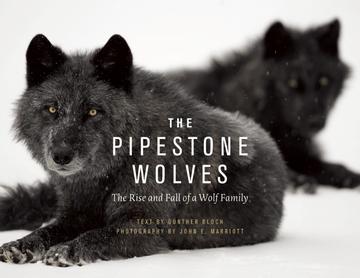About BC Books Online
BC Books Online was created for anyone interested in BC-published books, and with librarians especially in mind. We'd like to make it easy for library staff to learn about books from BC publishers - both new releases and backlist titles - so you can inform your patrons and keep your collections up to date.
Our site features print books and ebooks - both new releases and backlist titles - all of which are available to order through regular trade channels. Browse our subject categories to find books of interest or create and export lists by category to cross-reference with your library's current collection.
A quick tip: When reviewing the "Browse by Category" listings, please note that these are based on standardized BISAC Subject Codes supplied by the books' publishers. You will find additional selections, grouped by theme or region, in our "BC Reading Lists."
A compelling and lavishly illustrated photography book full of behavioural insights and wolf tales that will engage those interested in the state of wild wolves throughout North America.
In the winter of 2008–09, a new wolf family from the Pipestone Valley suddenly appeared in the Bow Valley of Banff National Park, taking up residence alongside a family that had ruled there for over a decade. Within a year, these new wolves had eliminated the Bow Valley wolves and established a dominance that would last for five years in the heart of Canada’s most famous national park.
As the climactic chapter in a twenty-year observational study of wolves in Banff National Park, internationally respected wolf behaviour expert Günther Bloch and widely renowned wildlife photographer John E. Marriott followed the Pipestones through the trials and tribulations of raising their family in one of the world’s most heavily visited national parks.
Bloch’s work involved patient, time-consuming observations day after day for five consecutive years, resulting in matchless ecological and behavioural insights that go beyond the usual information that comes from studying wild wolves using telemetry and radio collaring. Bloch outlines the differences between a wolf pack and a wolf family, he describes A- and B-type personalities in wolves and how this impacted survival rates of the Pipestone pups and yearlings in the Bow Valley. He also details the three societal types of wild wolves, debunking the age-old myth of a pecking order from alphas to omegas, based on what he was able to observe in person with these wild wolves.
The book chronicles not only the rise of the Pipestones and how they established and maintained dominance in the valley, but also how an increase in mass tourism in Banff led to a decrease in prey density for the Pipestones, which in turn led to the wolves changing their hunting strategies and expanding their summer range. Bloch explains how the Pipestones faced an inevitable fall from the top as pressure from eager wolf watchers increased exponentially in the park at the same time the wolves’ prey base was shrinking rapidly. Combining these influences with other factors like rail mortality and old age, Bloch and Marriott knew the end was near for the Pipestones.
The authors conclude with insights into how wolf and wildlife management in Banff National Park can improve. They outline steps Parks Canada should be taking to deal with the human management problems that are really at the core of the wildlife issues in the park. They also discuss whether we can continue to maintain a balance between ecological integrity and mass tourism in Canada’s flagship park and whether it is already too late. Have we passed the point of no return? And will our Banff wolves live forever after in a wildlife ghetto devoid of true wilderness characteristics?
This book takes you on a journey from when the Pipestones arrived, and up until their eventual downfall. It is filled with behaviour that the wolves exhibited, beautifully documented by the author’s direct observations and stunningly beautiful photographs taken by John E. Marriott. It makes this a ‘must have’ for anyone who enjoys reading up on animal behaviour, and of course wolves!



